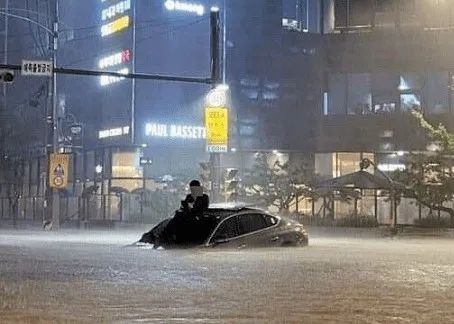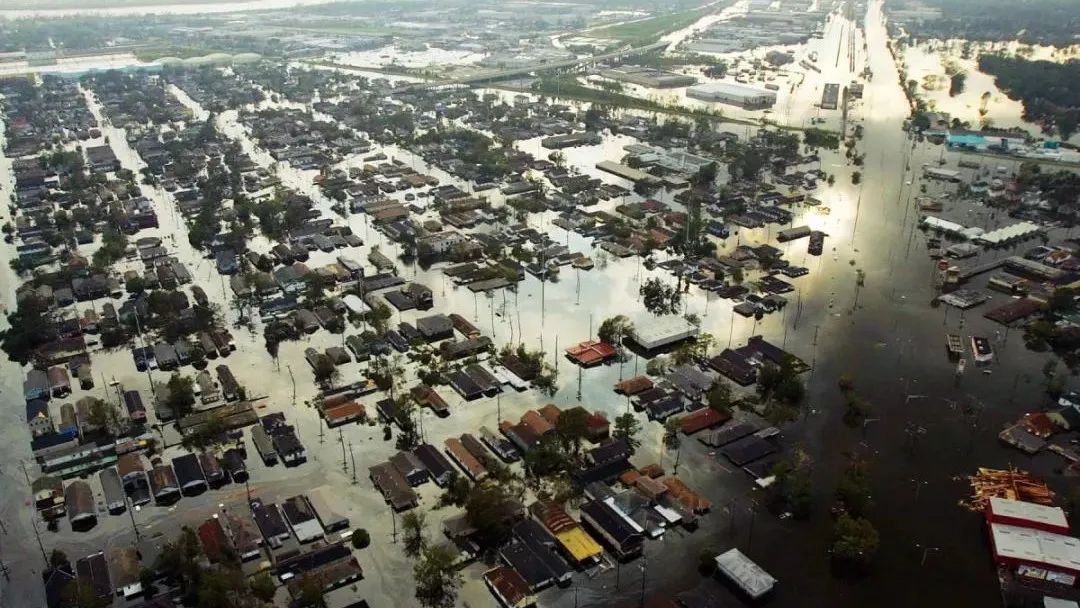Inspiration from the tragedy of heavy rain in Seoul: How does the city "run" climate change?
Author:Xinmin Evening News Time:2022.08.28
In less than 30 years in the future, about three -quarters of the world's major cities will face a completely different climate when designing the city's form and infrastructure.
You can only get weak light through narrow windows, and the indoor mildew smells of mildew because of humidity. In the Korean film "Parasitic", the basement life of poor families is sighing.
The movie story is fictional, but thousands of Korean families living in the basement really exist in Seoul. Recently, a century -old rainstorm made the dilemma of the Korean basement family into people's vision.
When a family of three living in a basement in Seoul came from the tragedy of unfortunate drowning, Korean society fell into a reflection -extreme weather did not come. How should the urban infrastructure after years cope?
At the moment when the climate abnormal phenomenon appears frequently, such a problem is not only South Korea faced.
The dilemma of the basement of the basement is prominent
The turbulent rain was poured into the subway station, and most of the cars were drowned. Recently, the Capital Circle, South Korea has encountered the largest heavy rain in 115 years. As of now, heavy rain has killed 14 people, 6 disappearances, and 26 injuries.
On the list of death, there are three people living in a semi -basement in Guanyue District, Seoul. According to Korean media reports, the deceased includes a 48 -year -old disabled woman, her sister and her sister who is only 13 years old. At that time, because the water was too large, they could not flee. When the firefighters arrived, the three had drowned.
This is not a solitary case. In a basement in Shangdao Cave, Tongqui District, Seoul, a woman in her 50s drowned for similar reasons during the rainstorm in her 50s.
Witnessing a series of tragedies, the Seoul Municipal Government announced that it will negotiate with the central government to revise relevant laws, and prohibit the use of the basement or semi -basement as a living space in order to avoid similar incidents.

The heavy rain in Seoul triggered the world's concerns about cities' response to climate change. All GJ pictures
It is undeniable that this rare rainstorm has once again allowed Korean society to pay attention to the huge group living in the basement of Seoul. Korean media reported that as of 2020, about 200,000 houses in Seoul alone belonged to the basement or semi -basement apartment. Data from the South Korean Department of Statistics show that in 2020, a total of 32.732 million households in South Korea lived in the basement or semi -underground room. Based on the average of 1.9 people per household, it was equivalent to more than 620,000 people live.
In Korean, the basement or semi -basement residence is called "Banjiha", and its history can be traced back to decades.
In the 1970s, because of the concerns such as war, the South Korean government updated the construction regulations and required all the newly -built underground apartment buildings to have a basement in order to be used as a bunker.
In the 1980s, a housing crisis appeared in the South Korean capital circle. In the case of insufficient living space, these underground space leases were legalized.
For South Korean people under the age of 35, the monthly rent is about half of the income. Therefore, the basement house has become a helpless choice for many young people with low rent.
But only the economy is affordable, it often needs to pay more. The residents of the basement have to endure the forced space, the rare sunshine, the humid humidity, many hidden safety hazards, and the labels of the poor.
When a 24 -year -old Korean young man Shen Yan followed his boyfriend into the basement, she said, "It looks unsafe, reminding me of the dark side of the city." 50 -year -old He Renzhi watched the rain drowned his home There is nothing more desperate than now.
Infrastructure is not adapted to climate change
To some extent, the rainstorm also exposed the potential safety risks of Korean urban architecture. The embarrassment presented by the basement house in front of extreme rainstorms may also be the epitome and alert that can not quickly adapt to climate change in infrastructure construction in some cities in the world.
The summer temperature in many European countries breaks the historical value, and extreme rainfall occurs in the United States, Japan and other countries, and the Greenland Glacier has accelerated ... Looking at the world, during this time, extreme weather events have frequently appeared in many places.
The consequences of climate change are threatening many cities on the earth. Some people are beginning to worry that climate change is much faster than cities take measures to adapt to it.
A study of 520 major cities around the world predicts that the climate belt on the earth will move north by hundreds of kilometers by 2050, which may lead to major changes in about 77%of the urban climate in the research object. For example, by the middle of this century, the climate in London will be similar to the current climate of Barcelona, which is lower latitudes, and the climate of Seattle is close to the current San Francisco.
This means that in less than 30 years, about three -quarters of major cities in the world may have a completely different climate when designing urban forms and infrastructure.

Hurricane "Caterina" forced the United States to invest over 10 billion US dollars to transform the urban flood prevention system.
Such changes not only affect the living environment of urban residents, but also challenge the city's adaptability.
Generally speaking, cities should respond to climate change, which mainly starts with two aspects of gas emissions that cause climate change and adopting measures to adapt to changes.
In recent years, many cities around the world have explored various emission reduction measures, such as public transportation electrification, introducing green and low -carbon buildings. However, John Renny Schott, a professor at the School of Public Policy at the University of Maryland, believes that it usually takes a long time to see these measures to achieve results.
In the short term, it is rare to quickly improve the measures to adapt to climate change ability. For the reason, the cost and time cost of funds are two major factor that cannot be ignored. On the one hand, the capital investment that upgrades the backward infrastructure of the city may be very expensive. For example, in order to cope with the crash of New Orleans dams caused by Hurricane Cartre Hurricane in 2005, the US government spent more than $ 14 billion to build an improved flood control system for the city.
On the other hand, even if the city is determined to transform backward facilities in a timely manner, it is difficult to keep up with the speed of climate change. In Europe, up to 75%of buildings are non -energy -saving buildings. A report by the European Union in 2020 predicts that it will take about 50 years to make these buildings more sustainable and adapt to changing climate conditions.
The report shows that the urban infrastructure built by the previous climate may only change at about 3%per year. Even the richest cities in the world take at least decades to make cities more flexible and sustainable.
Urban wisdom will be tested
Although there are many challenges, it does not mean that the city has nothing to do when it adapts to climate change. At present, some cities around the world are also starting from their own actual situation and strive to find the path to solve problems.
In Athens, buildings and pavement, about 80%of the cities are covered. When the city is exposed to the scorching sun, asphalt and concrete absorb calories. Because of this, the temperature in the center of Athens is about 10 ° C higher than that of the suburbs. When the city is in the rainstorm, asphalt and concrete will hinder the penetration of rainwater into the ground, causing floods in the local area.
In order to solve these urban problems that are intensified due to climate change, Athens launched four natural climate -based adaptation projects. Among them, a city forest is built near the Licopeos Mountain, through water resources and vegetation management to ensure the stability of soil and biodiversity; the green corridor between the Licopeos and Straphi Mountains ; Greening and pedestrian lanes are carried out near Plato College; green belts are created near the Landbridini Square, while reducing the temperature of intensive neighborhoods while connecting different areas of cities and improving air quality.
Athens is focusing on creating urban forests.

All these projects will promote biodiversity by benefiting from existing species. Participants Stephanie Lindenberg said that the project aims to increase at least 25%of green space for Athens and introduce various climate adaptive measures, including planting trees and building birds.
In Bernard in the United States, the average temperature in August 2021 was nearly 7 ° C. In order to cool down the city, the Berlidon Municipal Government plans to use the vacant parking lots and large asphalt and concrete to transform into a "Pocket Greenland Park" to build a number of rainwater gardens that are very friendly to the groundwater and make infrastructure more modernized. measure.
Berlienton Councilor Stonberg admits that many historic buildings in Bernablon have been built without considering energy efficiency and cooling before. She believes that in order to adapt to climate change, people can also adopt some methods that can protect old buildings and update them. For example, wind -proof and rainproof transformation of old buildings, improve the heat insulation system, closed windows, and build reflective roofs, are conducive to cooling cities.
In Chicago in the United States, government departments are also formulating policies to adapt to climate change. Among them, the streets are paved with penetrating materials to enable rainwater to filter the soil under the road; plant vegetation to absorb air pollutants and control rainwater runoff; Essence
The above similar plans are advancing in cities around the world. "Make urban renewal at a fast speed to deal with more extreme weather events, and you need to invest in new ideas, practices, and technology." In John Renni Schott, such a challenge is both a crisis and an opportunity. This may be the opportunity to make the city more secure in the future.
How to cope with the problems brought by climate change will test the wisdom of each city.
Produced deep -sea district studio
Written Wang Ruoxian
Editor Shen Haimo
- END -
Premier Ukraine: It will promote legislation and designate English to communicate in the official bu

According to Reuters, Ukraine Prime Minister Shimagr said on the 6th that the Ukr...
Global Line | Thai exhibitors look forward to expanding the market through the Expo

The second Expo, with the theme of Sharing Open Opportunities and Create a Beautif...